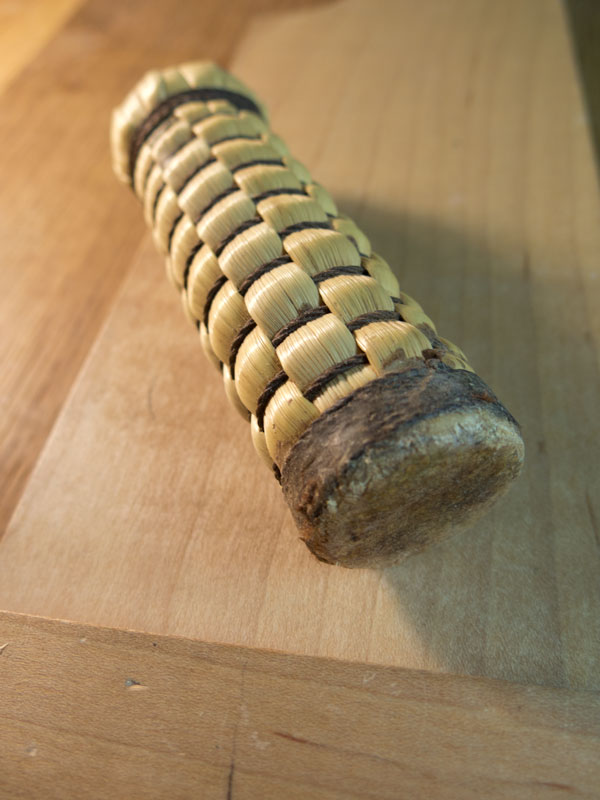We may receive a commission when you use our affiliate links. However, this does not impact our recommendations.
It’s easy to be skeptical about the polissoir. Could a bundle of broom corn radically change the way you finish some pieces of work?
All of us who worked on the translation of A.-J. Roubo’s “l’Art du Menuisier” were wary when we translated the section on the polissoir – literally “polisher.” So we were shocked to see how well it worked and now I have a beat-up one in my tool chest. I use it all the time.
What do I use it on? Smaller stuff, mostly. Polishing a dining table would be a lot of work. But polishing chair parts, small boxes and shop tools is quick, easy and effective. The burnishing effect of the polissoir appears permanent. I use a little bit of beeswax as a lubricant, but most of the lustre is from the hard broom corn compressing and polishing the wood fibers.
It’s a tactile finish as there is no plastic film between your skin and the wood – I particularly like it on turnings.
You can make your own polissoir – start with the handle of a whisk broom or a wok broom. Or support a hand craftsman and buy them from Don Williams via his site, The Barn on White Run. A broom-making neighbor of Don’s makes each one by hand. You can read more about the different kinds of polissoirs and find ordering information here.
— Christopher Schwarz
P.S. All of the gift guide entries (including last year’s) are here.
Here are some supplies and tools we find essential in our everyday work around the shop. We may receive a commission from sales referred by our links; however, we have carefully selected these products for their usefulness and quality.










Roubo says the polissoir was made from rush, not broom corn. In the 18th century Roubo’s Jonc ordinaire was common rush Juncus laevis, now called Juncus effusus. It is a much softer material.
Chris-
It seems like most of the photos I have seen of the polissoir in use are on mahogany (of some sort) or another fairly open-grained wood. Are there woods that work better for this finishing technique? Is it a function of wood density, or grain structure? Are there any woods for which this technique is ill suited (assuming of course it is appropriate for the use of the piece)?
Thanks
In the Philippines, the Filipinos traditionally use coconut husks face down for polishing their floors — yes, the kids put a big chunk under each foot and shuffle (dance to music) around. I wonder if they would work for our purposes, especially considering that they offer a big burnishing surface. Not so easy to acquire.
Chris,
You mention the Wok broom in your post – have you tried using one of those (bamboo) versus Good old American “Corn-based” product? 😛
Are there finishing differences – or is it un-noticeable?